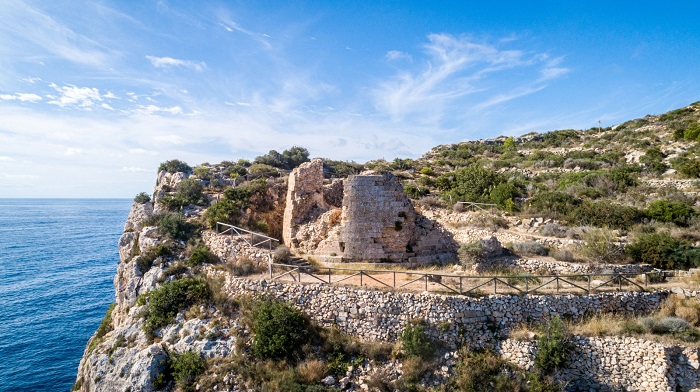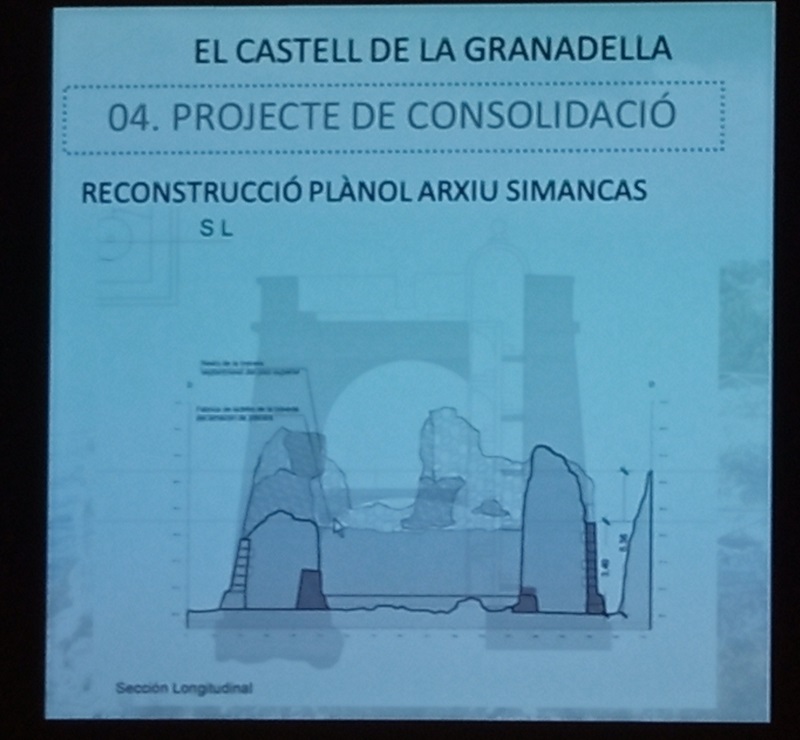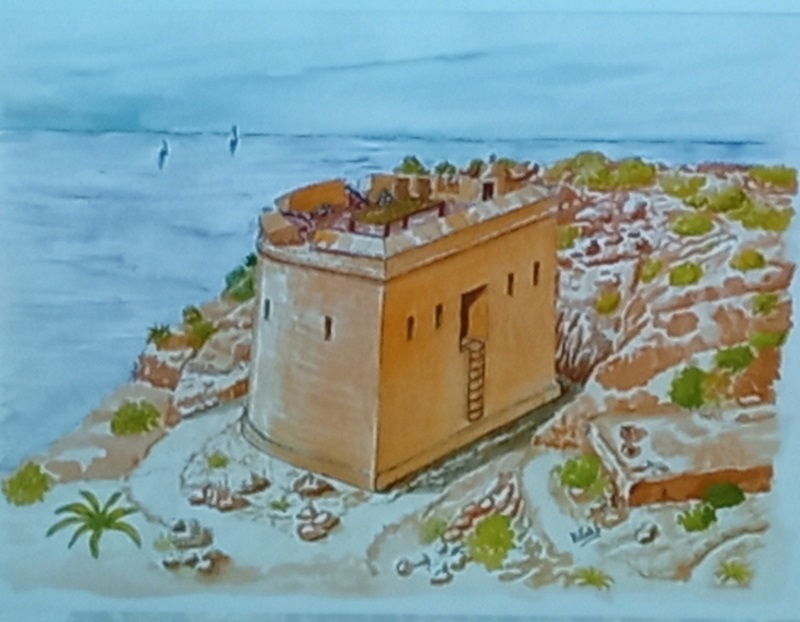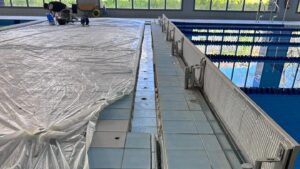Consolidating Granadella Castle will cost some 281,000 euros
The high cost is due to the difficulty of access to the 18th century tower and the likely need for a helicopter to carry the materials to the site.

Thursday 22nd April 2021 – CARLOS LOPEZ with Mike Smith
Xàbia Council presented its plans for the consolidation, not restoration, of the old Grandella Castle, the only one of these towers, which is protected as an Asset of Cultural Interest (BIC), which exists in the municipality and it is publicly owned.
In charge of developing the project is Evarist Torres, who revealed the details of the consolidation project of this building, originally built in 1739, which has an estimated cost of about 281,000 euros and that the Department of Culture hopes to be able to finance with different lines of subsidies. It’s high cost is due to the difficulty of access to the castle and the likely need for a helicopter to carry the materials to the site.
Torres explained that the consolidation consists of three phases:
First Phase: The restoration and recovery of the cistern, cleaning of the surfaces and selection of ashlars, collected in the different excavations that the museum promoted some years ago.
Second Phase: Consolidation work to give stability to the perimeter ashlar walls and stabilization of the masonry panels that formed the filling of the castle walls.
Third Phase: Filling the interior, recomposing the start of the spiral staircase that provided access the different parts of the defensive structure and highlighting the unique elements that remain, such as the start of the vault on the first floor and one of the embrasures.

In their presentation, both Torres and Ximo Bolufer, municipal archaeologist, offered details about the building, including the plans prior to its construction that the engineers drew up in Madrid and that later, when they saw the terrain, they modified to fit it to reality. The plans envisaged a three-level structure: lower floor (the warehouse), main floor and an upper floor where the watchtower was as well as two embrasures for the guns. With a plan of about 140 m² in the shape of a horseshoe or “ox’s hoof”, it has a wide curved wall facing east and a rectilinear wall in the west, the place from where the fortification was accessed. Bolufer explained that the tower had 5 guards, but in times of war, there would be 12 soldiers, three of which were gunners.

Granadella Castle in 1492
According to the archaeologist, the first documents that speak of the Granadella tower date from October 1492, although he clarified that in those times the entire coast of Xàbia was known as the Granadella and suggested that they actually referred to the Ambolo watchtower.
Later there is evidence of a surveillance point in the Tossal de la Xapa, which could be, according to Bolufer, the precedent of the current castle, which was built after the War of Succession in the 18th century.
He added that the remains of the castle “clearly” show that it was thoroughly destroyed with mines and charges of gunpowder that intended to destroy it, or at least render it useless. With this, Bolufer pointed out, they prevented the fortifications from passing into the hands of the French troops, and at the same time, they dismantled the defenses of the coast thinking about future conflicts with the Spanish crown.
The attempts by the Xàbia Council to recover the castle began in 1987 with a work camp for young people. Many years later, between 2001 and 2005, the Municipal Museum of Xàbia, with the financial support of the Council and the help of the Provincial Council, carried out three debris and archaeological monitoring campaigns, which allowed the entire structure of the building to be discovered, as well as recover a good set of archaeological materials.





